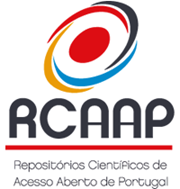Desempenho produtivo, classificação e qualidade de carcaça de suínos de diferentes linhas genéticas em engorda intensiva
DOI:
https://doi.org/10.25746/ruiips.v3.i4.14362Abstract
Utilizou-se um total de 200 animais (100 machos e 100 fêmeas), de duas linhas genéticas distintas (A e B), provenientes de duas unidades de multiplicação comerciais, ambas baseadas numa linha sintética materna híbrida Large White x Landrace e cruzamento terminal com Pietrain, como linha paterna, em cruzamento terminal para abate.
Determinou-se o ganho médio diário (GMD) e o índice de conversão alimentar (IC) em dois diferentes períodos (63-119 e 120-158 dias de vida). No final do ensaio efetuou-se a classificação da carcaça (CC), segundo o sistema SEUROP. Procedeu-se a uma análise de variância com o objetivo de avaliar quais os principais efeitos ambientais que influenciam as variáveis de resposta GMD, IC e CC. Determinou-se o coeficiente de regressão do GMD, em função do peso vivo inicial dos animais à entrada em engorda.
Globalmente, observou-se uma superioridade da linha genética B, no que concerne ao GMD (+74,6 g) (p<0,01) e ao IC (-0,07) (p<0,05). O GMD dos animais registou um acréscimo médio de 5,8 g, por acréscimo de kg de PV ao início do ensaio. A superioridade da linha genética B foi ainda evidenciada na classificação de carcaça SEUROP, com um acréscimo significativo (p<0,01) de 2,3% de carne magra.
Downloads
Published
How to Cite
Issue
Section
License
Authors publishing in this journal agree to the following terms:
Authors retain copyright and grant the journal the right of first publication, with the article simultaneously licensed under the Creative Commons Attribution License that allows sharing of the work with acknowledgement of authorship and initial publication in this journal.
Authors are permitted to enter into additional contracts separately for non-exclusive distribution of the version of the article published in this journal (e.g., publish in an institutional repository or as a book chapter), with acknowledgment of authorship and initial publication in this journal.
Authors have permission and are encouraged to publish and distribute their work online (e.g., in institutional repositories or on their personal webpage) at any point before or during the editorial process, as this may generate productive changes, as well as increase the impact and citation of the published work.




